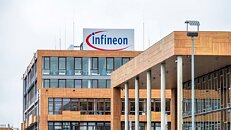- Joined
- May 21, 2024
- Messages
- 935 (3.36/day)
After nearly 15 years of legal disputes, Infineon Technologies and Qimonda's insolvency administrator have reached a final settlement, with Infineon agreeing to pay €800 million. The conflict centered on the valuation of memory business assets that Infineon spun off in 2006 to create Qimonda, once a global leader in memory chip manufacturing with 13,500 employees worldwide.
Qimonda's journey was short-lived. It debuted on the New York Stock Exchange in August 2006 but filed for insolvency by January 2009. Legal proceedings initiated in 2010 focused on claims that Qimonda's balance sheet was underfunded during the spin-off. The insolvency administrator alleged that the transferred memory business was undervalued, leading to a lawsuit for reimbursement of the share value discrepancy.

A court-appointed expert's report in January 2024 suggested a negative value for the contributed business units. Both parties objected to this assessment, with Infineon arguing that the assets' liquidation value should meet required contribution levels. Intensive negotiations followed, resulting in Infineon agreeing to pay €753.5 million to Qimonda's insolvency estate, accounting for a previous partial settlement in 2014.
The settlement, approved by Qimonda's creditors' committee and Infineon's management and supervisory boards, brings Infineon's total payments to the Qimonda estate to about €1 billion. In total, creditors have recovered €1.2 billion, including revenues from Qimonda's patent portfolio.
Qimonda's extensive patent holdings, covering semiconductor, computer, and telecommunications technologies, were crucial in the insolvency proceedings. Despite pre-insolvency licensing to major industry players, the licenses' validity was contested, particularly regarding German insolvency law's impact on Qimonda's US patents. The patent portfolio ultimately generated around €100 million in licensing revenues and was sold to Infineon through an international sales process.
View at TechPowerUp Main Site | Source
Qimonda's journey was short-lived. It debuted on the New York Stock Exchange in August 2006 but filed for insolvency by January 2009. Legal proceedings initiated in 2010 focused on claims that Qimonda's balance sheet was underfunded during the spin-off. The insolvency administrator alleged that the transferred memory business was undervalued, leading to a lawsuit for reimbursement of the share value discrepancy.

A court-appointed expert's report in January 2024 suggested a negative value for the contributed business units. Both parties objected to this assessment, with Infineon arguing that the assets' liquidation value should meet required contribution levels. Intensive negotiations followed, resulting in Infineon agreeing to pay €753.5 million to Qimonda's insolvency estate, accounting for a previous partial settlement in 2014.
The settlement, approved by Qimonda's creditors' committee and Infineon's management and supervisory boards, brings Infineon's total payments to the Qimonda estate to about €1 billion. In total, creditors have recovered €1.2 billion, including revenues from Qimonda's patent portfolio.
Qimonda's extensive patent holdings, covering semiconductor, computer, and telecommunications technologies, were crucial in the insolvency proceedings. Despite pre-insolvency licensing to major industry players, the licenses' validity was contested, particularly regarding German insolvency law's impact on Qimonda's US patents. The patent portfolio ultimately generated around €100 million in licensing revenues and was sold to Infineon through an international sales process.
View at TechPowerUp Main Site | Source




